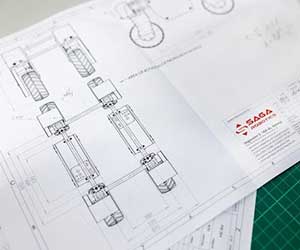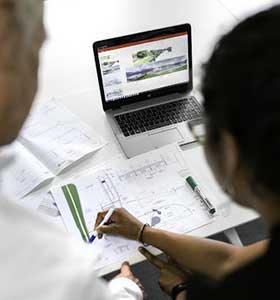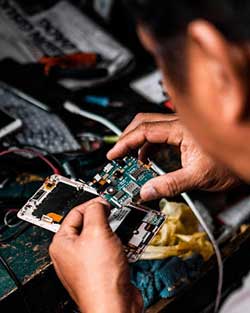Redesigning an existing product generally means you are either trying to make changes to a design you’ve made or you are trying to reverse-engineer an existing product and make changes to it to call it your own.

Both are usually less expensive than designing a brand new product, and should take less time as well.
Redesigning Your Own Product
 Redesigning one of your own products sounds simple enough but it can be more involved than you might think.
Redesigning one of your own products sounds simple enough but it can be more involved than you might think.
Before you proceed with a redesign, you’ll want to consider the following points.
Are the changes that I want to implement necessary?
It’s very important to figure out whether the changes you want to make are going to improve your product substantially. Most people don’t like change and redesigns can often mean they will mean they will have to relearn how to use your product.
Some people are simply sentimental and don’t want to see any adjustments to their favorite products. Over 56% of people don’t like updating their phone software because they want to keep things the same.
Identify the main forces that are driving the need for a redesign.
You don’t just want to redesign products on a whim. Any changes made to a product is a risk, even if all those changes are intended to be “positive”. Take Snapchat, once a titan on all phone app stores, is now severely diminished through a single bad redesign. There’s Tropicana’s redesign mistake that cost them more than 60$ million. How about those 3D TV’s that are now a distant memory?
In the end, your redesign should be based on something your customers have indicated they need or want, not because you think your product is stale.
Here are some strong reasons to implement a redesign –
- Technology has advanced to the point where new useful features can be provided that genuinely help your user without overcomplicating the product.
- You’ve identified a key feature your competition offers but you don’t. This would obviously be something a successful competitor is offering, you don’t want to emulate your losing competition.
- Your product is losing money due to a feature your customers have identified or complained about that a redesign can fix.
- Changes in regulations from government agencies.
- A need to align with new organizational branding.
You should be in a good position to identify reasons to identify potential redesign changes. These shouldn’t stem from personal whims, but rather what people are saying about your product. You should have a history of feedback from your customers including what they like and don’t like about your product from user reviews, research on what your competition is doing, how easy your users find your product to use and understand, and what drives them to buy your product over other options.
If you don’t have that information, then you need to work on getting it as soon as possible. Start by having a place where customers can review your product, conduct surveys and market research.
Implementing the Changes

People like what is familiar to them, so all the major features of your product, unless they are being redesigned, should be where people expect them to be and work very similarly as before.
Take Yahoo, which after some redesigns, tried to get their staff to switch to yahoo mail over others such as google and outlook. Unfortunately the designs completely stripped what made yahoo mail familiar, moved buttons around, and alienated users to the point where they couldn’t even get more than 25% of even their own staff to use it.
Ideally your goal with a redesign should be to simply upgrade your product, not completely remake it. Your product should be recognizably the same, but better. If a customer looks at your product after a redesign and can’t tell if either you or your competition made it, or is unable to figure out how it works, you probably went too far in the redesign.
Your implemented changes should be:
- Easy to use
- Keeping the product recognizable as something from your brand
- Familiar to users who’ve used previous versions of it
Launching a Redesigned Product

While launching a redesigned product doesn’t take the same kind of marketing budget like a brand new product would, it still needs to be launched carefully.
It’s recommended you start with a soft launch, meaning you have a group of preferred users test the redesign and gather their feedback before sending it to the open market.
This way if there are complaints with the changes you’ll be able to address them. It’s much easier to manage the expectations of people who know they are testing a product.
If you have to make large changes to the product, then you may want to come up with an onboarding process to show your customers what’s changed and how to use the product’s changed features.
Considering Reverse Engineering
 The process of reverse engineering a part involves taking a product, dismantling it, and then studying, analyzing, and documenting how the pieces work together to make the part.
The process of reverse engineering a part involves taking a product, dismantling it, and then studying, analyzing, and documenting how the pieces work together to make the part.
Reverse engineering in and of itself, is not illegal, so long as the part being reverse engineered was lawfully procured. This means that it is legal to reverse engineer a part bought in a store, but if the part being reverse engineered was stolen, that would then be illegal.
It is also not legal to reverse engineer patented or copyrighted items, though patented items often have to publicly disclose how a product works in great detail so the protected idea is clearly outlined anyways, so there wouldn’t be much reason to reverse engineer it in the first place.
The idea of reverse engineering a product is to save time designing a product. There is no need to “reinvent the wheel” if you don’t have to.
Finding Redesign Services
Are you looking to work with an American engineering team to redesign your part or product?
We have over 30 years of experience, designing, developing and manufacturing products. We can help find the most streamlined way to accomplish your objectives.
Contact us today, we are located in Chandler at the heart of Arizona.
